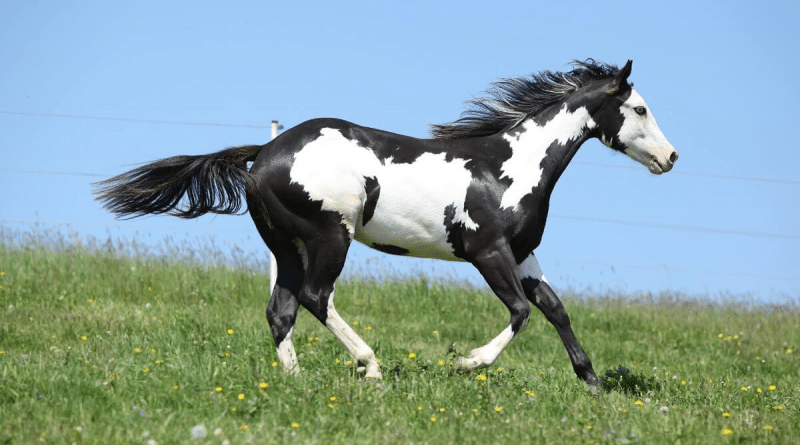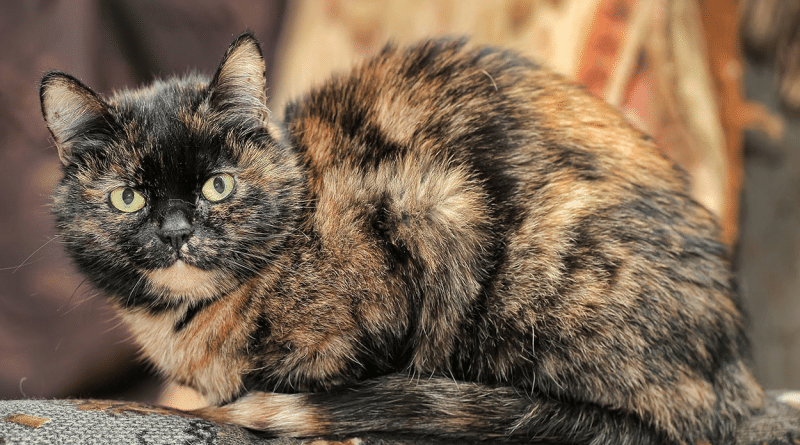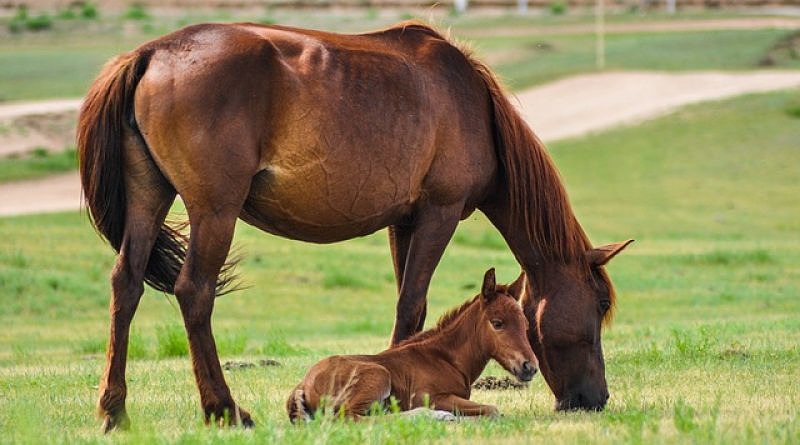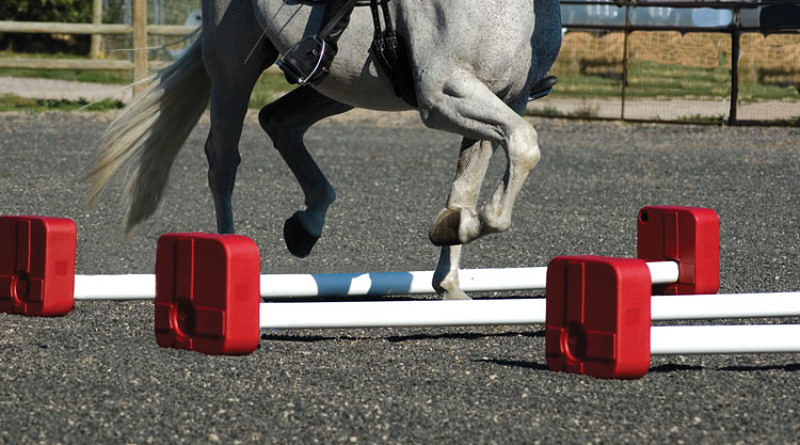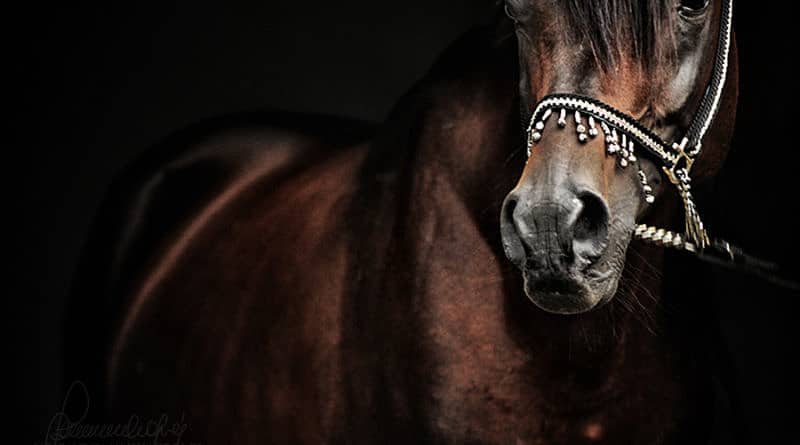Introduction to Genetics, Case Study 2: Lethal white and frame overo
How is a pretty white patch on a horse’s side linked to a deadly genetic condition? Discover the sinister side of the allele responsible for frame overo.
Previously in this series: Introduction to Genetics, Case Study 1: Tortoiseshell cat colour
If we think about genes as recipes it is clear that different versions (alleles) of the same recipe (gene) will have different effects. This seems simple enough but real-world genetics can be incredibly complicated thanks to the complexity of organisms themselves. This is why genetics tends to be simplified into easier concepts, like the idea that there is ‘a gene for’ some particular trait. Even the idea of ‘dominant’ and ‘recessive’ genes is something of a simplification.
Frame overo is a white marking pattern common in the American Paint Horse. The cause of frame is a single letter change in a single gene. At first glance it seems reasonable to say that this gene is ‘the gene for’ frame overo. But that is not quite accurate. The gene in question plays a role in the movement of cells that will eventually become pigment cells – it produces a protein that we can think of as regulating the movement of these cells to their ‘normal’ position (we are skipping over a lot of molecular and developmental complexity here!).
In a non-frame horse both copies of this gene will produce the ‘movement regulation’ protein: the pigment cells will move to the skin and will eventually go on to produce pigments that colour the horse’s coat. But in horses with one copy of the ‘frame’ allele less of the ‘movement regulation’ protein is created, making it likely that some of the pigment cell precursors will not be moved correctly, resulting in the characteristic white markings.
If you understand this much then you might be able to guess what happens if the horse has two frame alleles. None of this particular ‘movement regulation’ protein is created, so very little, if any, of the pigment precursor cells move to the skin, resulting in a horse without pigment in their coat – a true white horse. So what is so lethal about that?
What we missed out in the initial description is that the ‘frame’ gene is not specifically targeted at just pigment cells. It is not only involved in regulating the movement of pigment cells, but also cells that will eventually go on to form some of the horse’s intestinal nerve cells. Horses with only one copy of the ‘frame’ allele (heterozygous) still produce enough of the ‘movement regulation’ protein to ensure that the intestinal system is fine: horses with frame overo are perfectly healthy and live completely normal lives. But horses with two copies (homozygous) are born with a digestive system that is so limited in function that sadly there is no hope for them: they show symptoms of colic and die within a few days. There is no treatment or cure. Foals with lethal white are normally euthanised as soon as the condition is discovered.
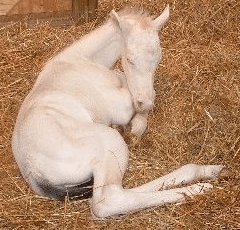
Lethal white shows us that what looks like a fairly innocuous and attractive white marking gene is actually something very different! The white markings on a frame overo horse are an indication of a severe genetic problem that has its cause deep in the complexity of molecular and developmental biology.
So does this mean that no-one should breed from frame overo horses because of the risk of producing foals with lethal white syndrome? Well, we need to remember that the condition is only a problem when a foal is homozygous. Horses inherit half of their alleles from their father and half from their mother. So to produce a lethal white foal we would need to breed two frame horses together, in which case ¼ of the foals wouldn’t carry frame at all, ½ the foals would be heterozygous for frame, like their parents, and another ¼ would be lethal white. But if you breed a frame horse with a non-frame horse it is impossible to produce lethal white: ½ of the foals will be non-frame, and ½ of the foals will have frame, but none of them can have two frame alleles (lethal white).
Responsible breeders have always tried to avoid mating frames together, though that isn’t as easy as it may sound. Some horses with the frame allele may not show any visible sign of it in their coat due to interactions with other colour/pattern genes. Fortunately there is now a genetic test for frame, and horse breeders are encouraged to test any horse that might carry frame before breeding.
Here’s another question: is frame dominant or recessive? Well, if you have a horse who is heterozygous for frame (one frame allele and one normal allele) then they will exhibit the frame phenotype: it is clearly dominant. But at the same time, lethal white can only occur in horses who are homozygous for the frame allele: it is clearly recessive! So frame is dominant but lethal white, which is simply the result of two frame alleles, is recessive. There is no clear answer here because dominant and recessive are just ways of describing large scale phenotypic patterns that can result from certain alleles interacting. Dominant and recessive are terms that predate molecular biology and are (sometimes convenient and sometimes misleading) simplifications of a complex molecular process: they are not a feature of genes themselves.

